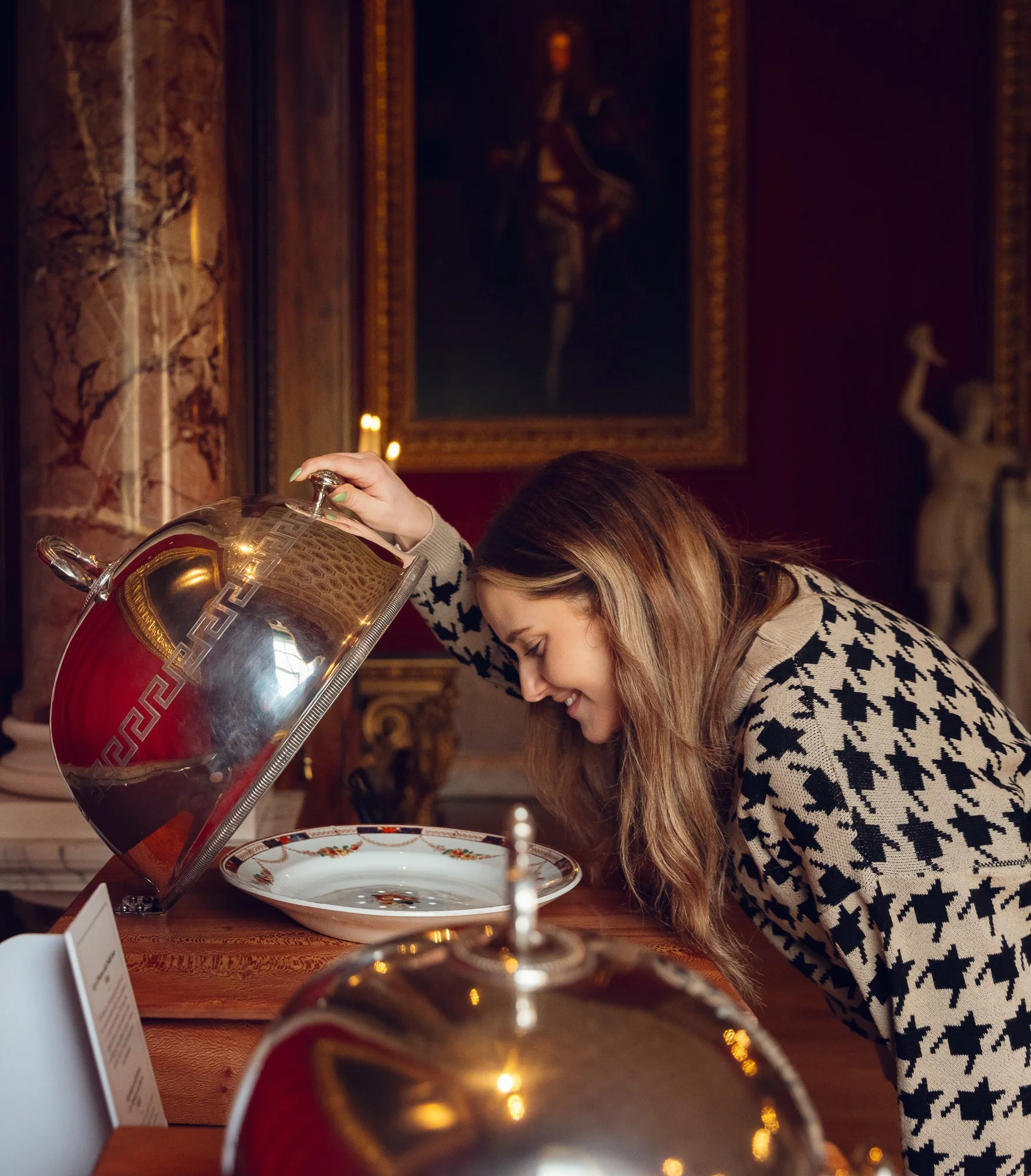Aromas of Dinners Past
Created for the exhibition, Picturing Childhood, AVM Curiosities presents ‘Aromas of Dinner Past’- a series of grand scent chambers in the historic dining room at Chatsworth House. The four scents showcased in this olfactory installation were inspired by the historical menus in the Chatsworth archive. Ranging from 1846-1850, the dishes have been selected to create an olfactory experience of 19th century formal dining. The bespoke scent chambers made from repurposed antique cloches have been designed to be tilted backwards, so you can sniff the “empty” plate and be transported back to the ghosts of dinners past, evoking the experience of Queen Victoria’s first formal meal at Chatsworth, when she was just 13 years old.
Scent Menu:
Leg of Mutton with Truffle Sauce (1849)
This extravagant dish would be quite the showstopper at any dinner party. The pastoral flavours of mutton pair perfectly with the mushroom-like truffle: a true celebration of countryside produce and earthy aromas. But while for most of us a Leg of Mutton in Truffle Sauce would be the centerpiece of our feast, the menu that inspired this scent also included; a whole suckling pig, roast lamb, ox tongue, venison cutlets, slices of beef, roast hare and two pheasants.
Asparagus with Butter (1848)
Late March to Early May is peak asparagus season, so it is very fitting that this dish was found on a menu dated 22nd March 1848. In the 19th century, food would have been highly seasonal and this is a dish that would have celebrated the best local produce. Les Asperges au Beurre was part a series of ‘entremêts’, which are small dishes that were served between the main and sweet dishes as part of a formal meal. The menu that inspired this scent was written in French like many menus from this period, as was the fashion.
Pineapple Jellies (1846)
Pineapples are historical symbols of welcome and wealth, making them the perfect addition to any fashionable 19th century dinner party. Pair this with a passion for jelly and you have a delectable dessert which embodies some of the food fashions of the period. The trend for growing your own pineapples was something which further solidified the status of this famous fruit and led to years of competition between grand estates. However, it was the Duke of Devonshire’s head gardener Joseph Paxton who was the envy of all - between 1826 and 1858 his pineapples won numerous medals at horticultural shows and the admiration of gardeners around Britain.
Port (1850)
Port is a Portuguese fortified wine which has been popular in England since at least the 17th century. In Victorian England, children could be served a small glass of wine at the dinner table, which was often watered down or turned into a punch. Mrs. Beeton's Book of Household Management from 1861 includes a recipe for Negus (a sort of mulled wine), which contains ‘1 pint port wine’ along with water, sugar, lemon and nutmeg. Beeton writes: "as this beverage is more usually drunk at children's parties than at any other, the wine need not be very old or expensive for the purpose... Allow 1 pint of wine, with the other ingredients in proportion, for a party of 9 or 10 children."
Aromas of Dinners Past
Olfactory installation for Picturing Childhood
Chatsworth House | Bakewell
16 March – 6 October 2024
Photos: India Hobson courtesy of Chatsworth House Trust.





